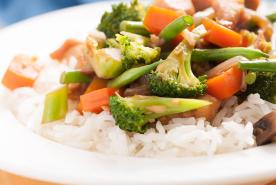The DASH Diet helps manage high blood pressure and kidney disease with fruits, veggies, whole grains, and low-fat dairy. Discover more about its benefits.
Today’s leading health organizations are heartily endorsing the DASH Diet for the informed health-conscious diner. The DASH (Dietary Approaches to Stop Hypertension) Diet has been recommended by the National Kidney Foundation and approved by The National Heart, Lung and Blood Institute, The American Heart Association, the Dietary Guidelines for Americans, and also forms the basis for the USDA MyPyramid.
What is the DASH Diet?
The DASH Diet is rich in fruits, vegetables, low-fat dairy products, whole grains, fish, poultry, beans, seeds, and nuts. It is low in salt and sodium, added sugars and sweets, fat and red meats.
Learn more about the DASH Diet
Who is the DASH diet for?
The DASH diet is a recognized treatment for hypertension, heart disease, and kidney disease and can slow the progression of heart and kidney disease. If you already have chronic kidney disease, you should speak with your doctor and dietitian before starting any new diets as you may have special restrictions to consider. The DASH diet should not be used by people on dialysis. Individuals on dialysis have special dietary needs that should be discussed with a registered dietitian.
Example DASH diet for a 2,000 calorie diet
| Food Group | Daily Servings | Serving Size |
|---|---|---|
| Grains1 | 6–8 | 1 Slice bread 1 oz dry cereal2 ½ cup cooked rice, pasta, or cereal |
| Vegetables | 4–5 | 1 cup raw leafy vegetable |
| Fruits | 4–5 | 1 medium fruit |
| Fat–free or low–fat milk and milk products | 2–3 | 1 oz milk or yogurt |
| Lean meats, poultry, and fish | 6 or less | 1 oz cooked meats, poultry, or fish |
| Nuts, seeds, and legumes | 4–5 per week | 1/3 cup or 1 ½ oz nuts |
| Fats and oils | 2–3 | 1 tsp soft margarine |
| Sweets and added sugars | 5 or less per week | 1 Tbsp sugar |
1. Whole grains are recommended for most grain servings as a good source of fiber and nutrients.
2. Serving sizes vary between ½ cup and 1 ¼ cups, depending on cereal type. Check the product's Nutrition Facts label.
Looking for nutrition guidance? Contact a CKD dietitian in your area.













